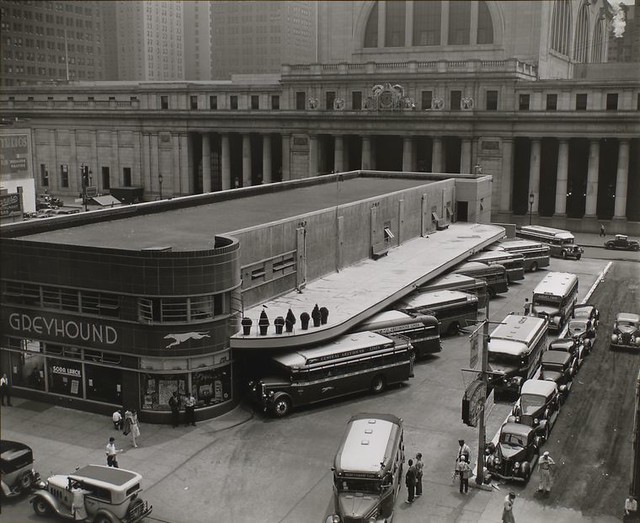
An October derailment have many fearing the bad old days. (Photo via @NYCTSubwayScoop)
Remember the bad old days? Remember when the subways weren’t safe, when track fires and derailments ran rampant, when trains weren’t air conditioned but were covered in graffiti and Bernard Goetz came to stand for a generation of New Yorkers too scared to use transit after dark? Remember cars that lost power, doors that wouldn’t open and public address systems that wouldn’t address? Anyone old enough who’s lived in New York City long enough certainly does.
While I came off age in the city toward the tail end of those dark days for the city and its transit network, I’ve heard the horror stories and read the news clippings often enough to know that no one wants to relive those days. The transit network, which has rebounded from the 1970s and 1980s to carry over 5 million passengers per day, has become too vital to slip back into that morass of decay and neglect.
For the past few years, though, fears of a regression have crept into news coverage of the subways. It’s certainly true that deferred maintenance brought about by an underfunded capital plan will risk sending the subways into a lull, but over the past 25 years, the MTA has invested heavily in its state of good repair. Although stations and their components aren’t up to par, the tracks, switches and signals that truly count are in far better shape than the naked eye can see. If the station walls are crumbling, riders are willing to overlook cosmetic blemishes as long as the trains run regularly and quickly.
When accidents happen though — such as the derailment on the 6 train the other week — the fears creep up a notch. At Transportation Nation yesterday, Jim O’Grady spoke to some riders who worry about the bad old days. The October 24 incident was the third derailment in six months, but no one was injured as the train jumped the tracks early in the morning. Still, New Yorkers like to fret, and fret they shall. “If they keep cutting the budget and keep raising the fare, less people will be able to ride it and it won’t be as reliable,” Straphanger Amber Morgan said.
O’Grady, who isn’t waxing nostalgic, notes how the system isn’t bad when we use its nadir as a comparison, but he notes that not everything is wine and roses these days. He writes:
Budget cuts have made some things worse. Recent NY MTA data show a 20 percent increase in trains arriving more than five minutes late at the end of their runs. But New York City Transit President Tom Prendergast said major service disruptions — like those caused by derailments — are not worsening because of belt-tightening
“We do not think it’s in any way related to budget issues or financial issues,” he said. “We treat every derailment very seriously. I mean, I was here at a point in time twenty years ago, when we had 27 derailments a year.”
Surprisingly, Gene Russianoff of the Straphangers Campaign agrees with Prendergast. He said the NY MTA’s average of less than two derailments per year over the last five years is not bad. But Russianoff added delays and overcrowding are other matters. “You know, it’s not the bad old days yet,” he said. “But you have to worry about going down the slippery slope.”
As much as I believe that Albany has failed the MTA and that the MTA’s debt bomb could have tremendous consequences for the operating budget and fares down the road, the system simply isn’t re-entering the bad old days. We’re not going to see 27 derailments per year as the MTA once averaged; we’re not going to see track fires and broken-down trains. The MTA’s current fleet of rolling stock and its obsessive attention to track beds and in-tunnel infrastructure has insured our system against such an immediate future. A one-off derailment happens.
The real worries though are about the long-term future. If the MTA doesn’t get the infusion of capital it needs and if it can’t continue to invest over the next 10, 15 or 20 years, then we can begin to worry. The system broke down in the 1970s and 1980s because rolling stock that had long outlived its shelf life was still being pressed into service each day while track beds and signal systems that were 40-70 years old weren’t being maintained and upgraded.
It’s very tough for those of us living in the here and now to see beyond our immediate needs. I want my train to arrive quickly in the morning when I come to work, and I don’t want to wait out a sick passenger or pushy straphangers. The fears and concerns about the bad old days though lurk in the distant background. They won’t crop up tomorrow, next week or next month. But do we have the foresight today to avoid a disaster in 2025 or 2035? With the MTA’s debt levels rising, I don’t think we do.







